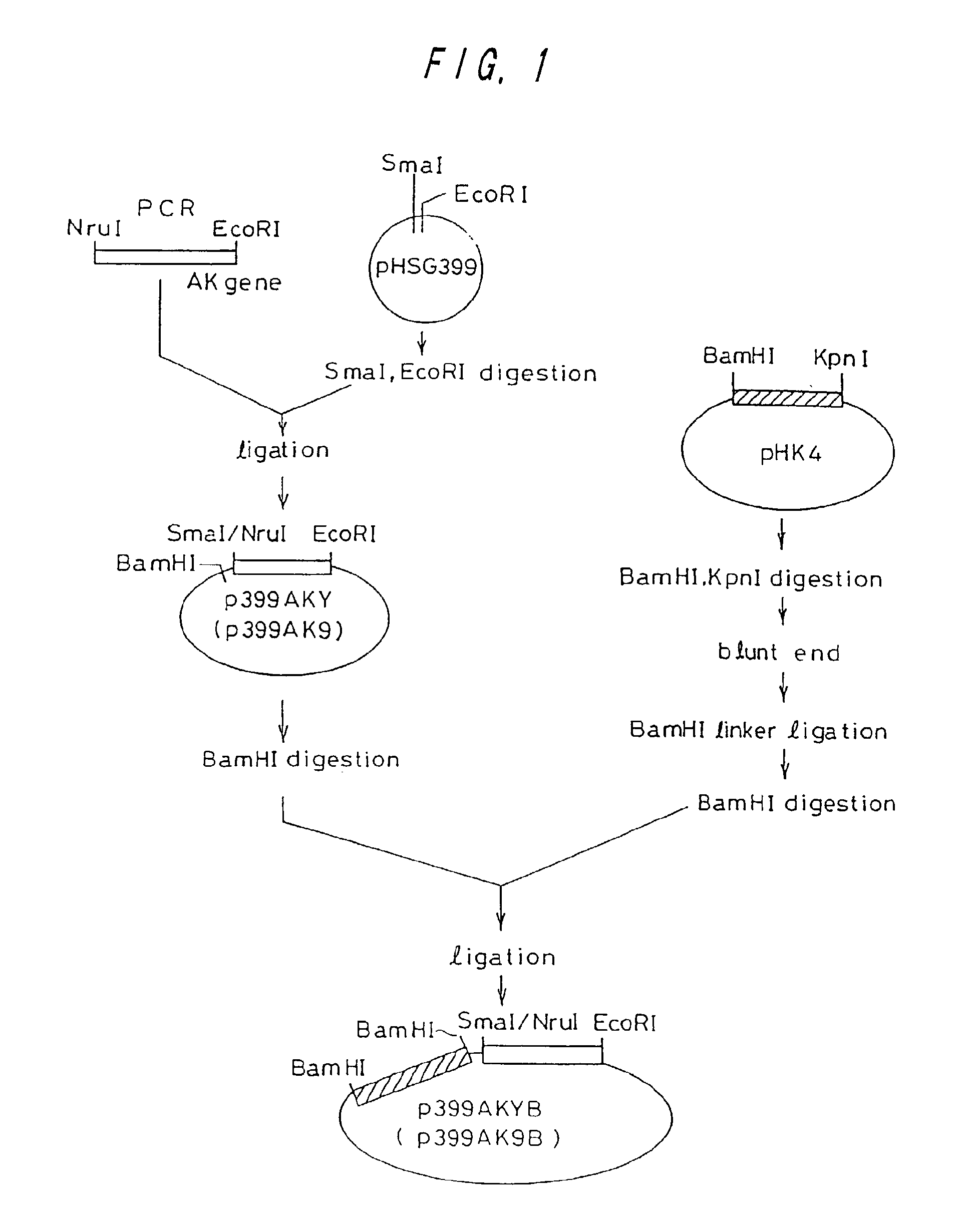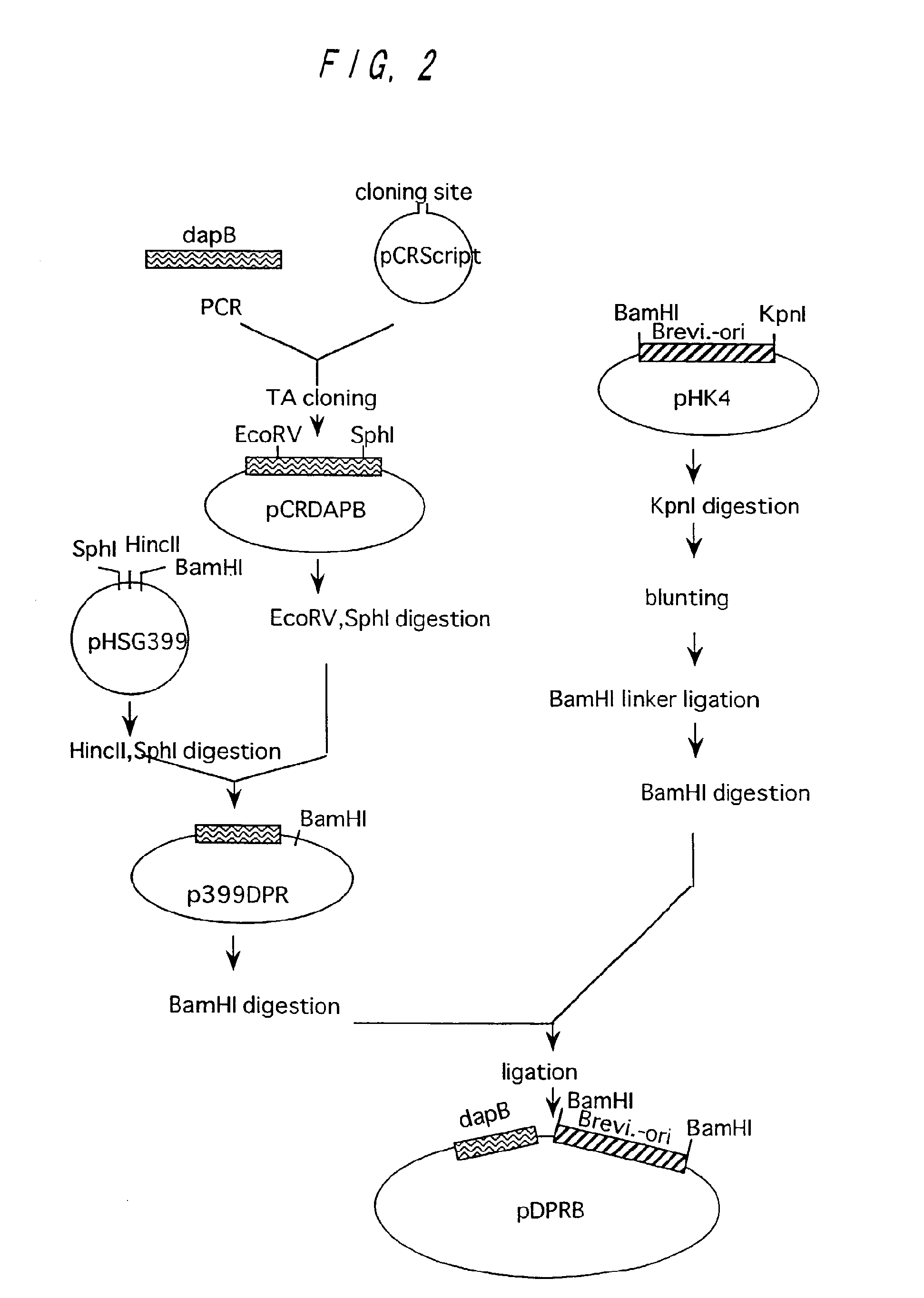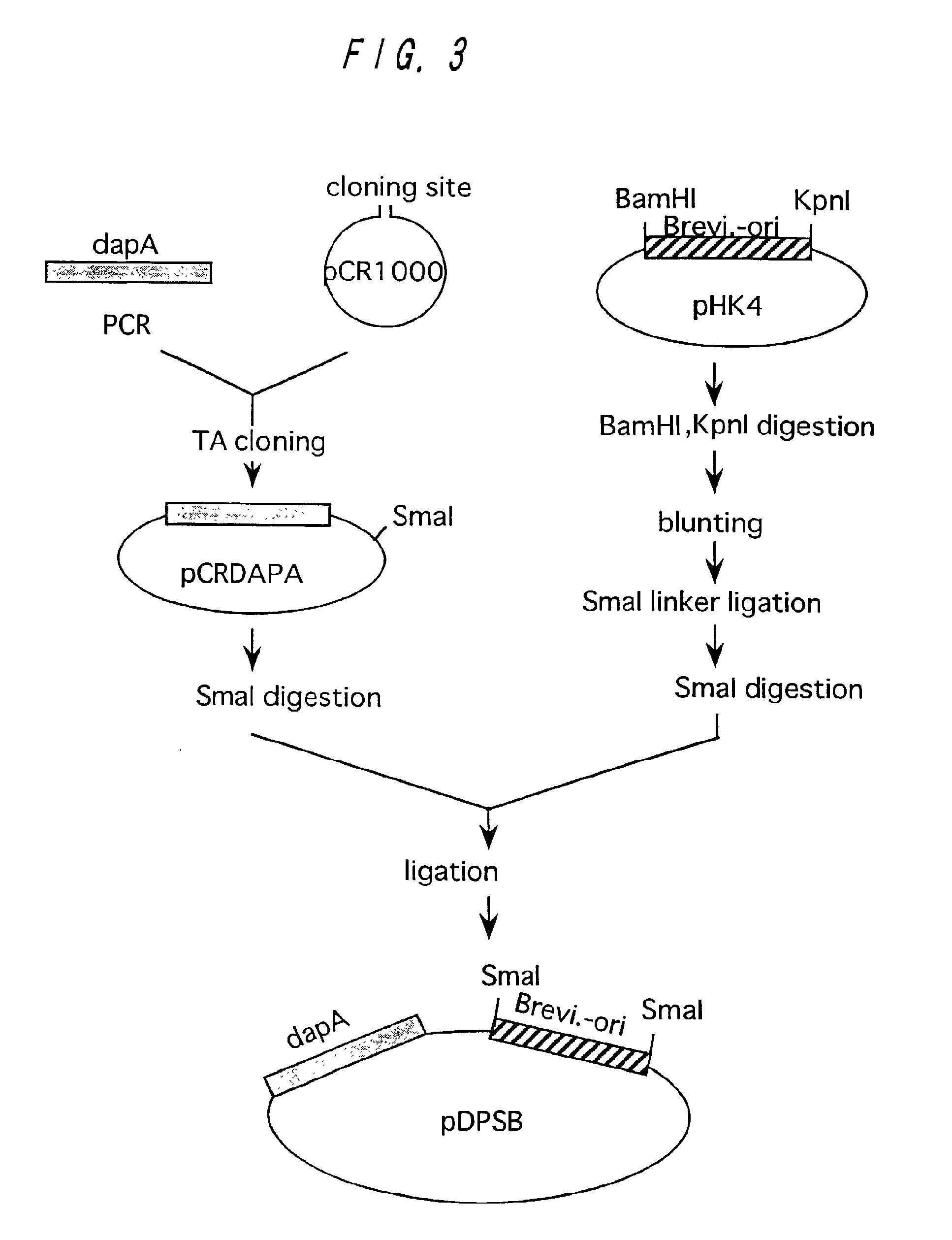Method of producing l-lysine
a technology of lysine and lysine, which is applied in the direction of lysine, transferase, enzymology, etc., can solve the problems of further reducing growth speed and bacterium suffering a decrease in growth speed, so as to improve the l-lysine-producing ability and the growth speed of coryneform bacterium
- Summary
- Abstract
- Description
- Claims
- Application Information
AI Technical Summary
Benefits of technology
Problems solved by technology
Method used
Image
Examples
example 1
Preparation of Wild Type lysC Gene and Mutant lysC Gene from Brevibacterium lactofermentum \
Preparation of Wild Type and Mutant lysC's and Preparation of Plasmids Containing them
[0111]A strain of Brevibacterium lactofermentum ATCC 13869, and an L-lysine-producing mutant strain AJ3445 (FERM P-1944) obtained from the ATCC 13869 strain by a mutation treatment were used as chromosomal DNA donors. The AJ3445 strain had been subjected to mutation so that lysC was changed to involve substantial desensitization from concerted inhibition by lysine and threonine (Journal of Biochemistry, 68, 701-710 (1970)).
[0112]A DNA fragment containing lysC was amplified from chromosomal DNA in accordance with the PCR method (polymerase chain reaction; see White, T. J. et al., Trends Genet., 5, 185 (1989)). As for DNA primers used for amplification, single strand DNA's of 23-mer and 21-mer having nucleotide sequences shown in SEQ ID NOs: 1 and 2 were synthesized in order to amplify a region of about 1,643...
example 2
Preparation of dapB from Brevibacterium lactofermentum
Preparation of dapB and Construction of Plasmid Containing dapB
[0121]A wild type strain of Brevibacterium lactofermentum ATCC 13869 was used as a chromosomal DNA donor. Chromosomal DNA was prepared from the ATCC 13869 strain in accordance with an ordinary method. A DNA fragment containing dapB was amplified from the chromosomal DNA in accordance with PCR. As for DNA primers used for amplification, DNA's of 23-mers having nucleotide sequences depicted in SEQ ID NOs: 8 and 9 in Sequence Listing respectively were synthesized in order to amplify a region of about 2.0 kb coding for DDPR on the basis of a sequence known for Brevibacterium lactofermentum (see Journal of Bacteriology, 157(9), 2743-2749 (1993)). Synthesis of DNA and PCR were performed in the same manner as described in Example 1. pCR-Script (produced by Invitrogen) was used as a cloning vector for the amplified gene fragment of 2,001 bp, which was ligated with the ampli...
example 3
Preparation of dapA from Brevibacterium lactofermentum
Preparation of dapA and Construction of Plasmid Containing dapA
[0125]A wild type strain of Brevibacterium lactofermentum ATCC 13869 was used as a chromosomal DNA donor. Chromosomal DNA was prepared from the ATCC 13869 strain in accordance with an ordinary method. A DNA fragment containing dapA was amplified from the chromosomal DNA in accordance with PCR. As for DNA primers used for amplification, DNA's of 20-mers having nucleotide sequences shown in SEQ ID NOs: 12 and 13 in Sequence Listing respectively were synthesized in order to amplify a region of about 1.5 kb coding for DDPS on the basis of a sequence known for Corynebacterium glutamicum (see Nucleic Acids Research, 18(21), 6421 (1990); EMBL accession No. X53993). Synthesis of DNA and PCR were performed in the same manner as described in Example 1. pCR1000 (produced by Invitrogen, see Bio / Technology, 9, 657-663 (1991)) was used as a cloning vector for the amplified gene f...
PUM
| Property | Measurement | Unit |
|---|---|---|
| temperature | aaaaa | aaaaa |
| temperature | aaaaa | aaaaa |
| pH | aaaaa | aaaaa |
Abstract
Description
Claims
Application Information
 Login to View More
Login to View More - R&D
- Intellectual Property
- Life Sciences
- Materials
- Tech Scout
- Unparalleled Data Quality
- Higher Quality Content
- 60% Fewer Hallucinations
Browse by: Latest US Patents, China's latest patents, Technical Efficacy Thesaurus, Application Domain, Technology Topic, Popular Technical Reports.
© 2025 PatSnap. All rights reserved.Legal|Privacy policy|Modern Slavery Act Transparency Statement|Sitemap|About US| Contact US: help@patsnap.com



